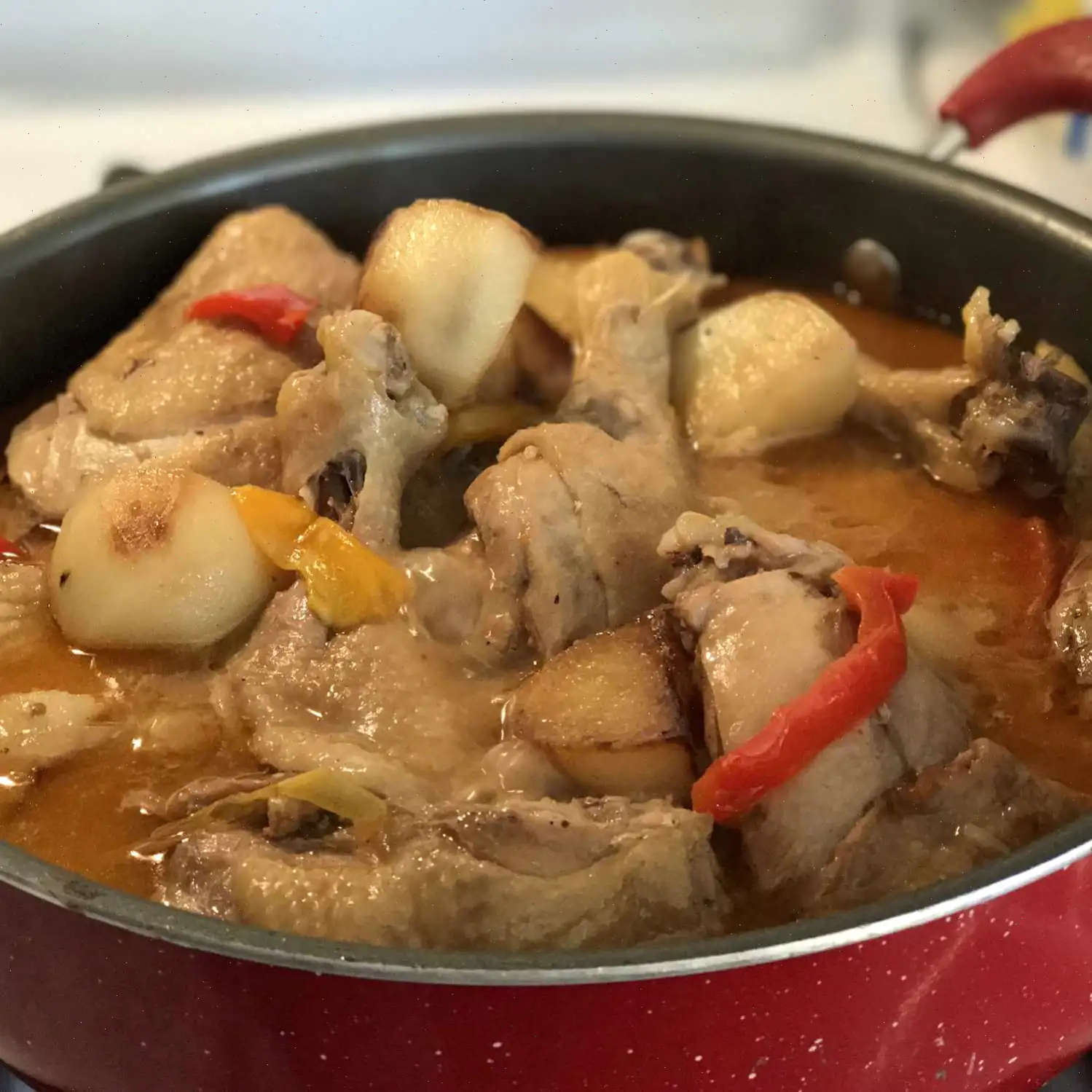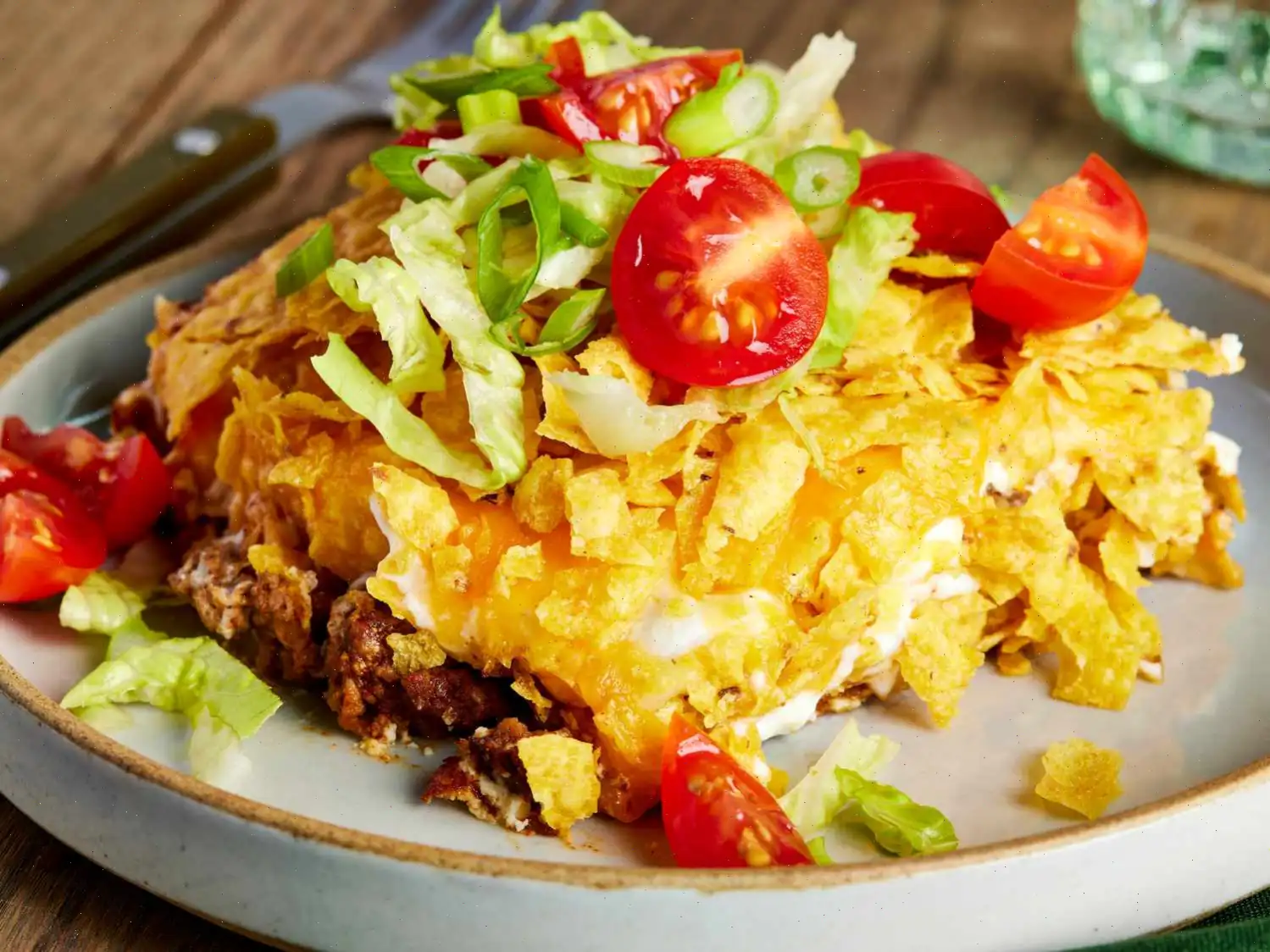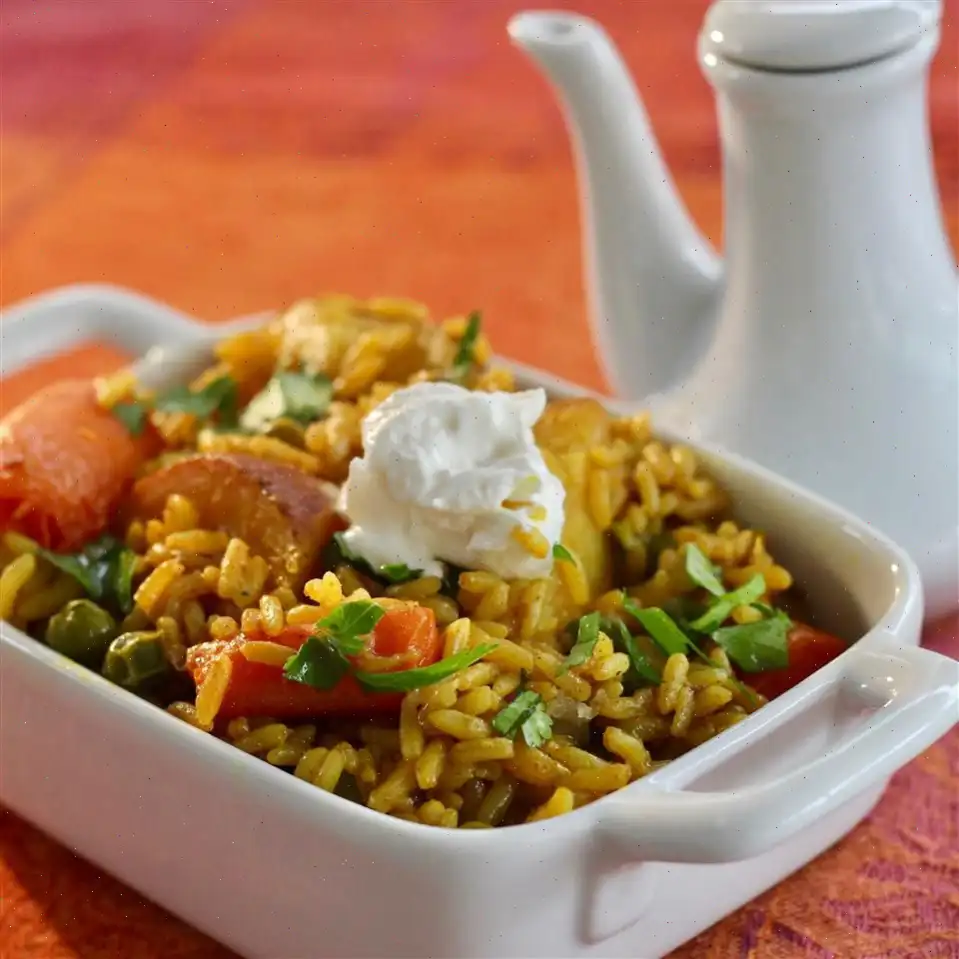
Ginataang Manok (Chicken Cooked in Coconut Milk) Recipe
Recipe: Coconut Chicken with Spinach
Ingredients (Original Recipe for 6 Servings)
- 3 tablespoons canola oil
- cup sliced fresh ginger
- 1 (5-pound) whole chicken, cut into pieces
- Salt and ground black pepper to taste
- 2 (14-ounce) cans coconut milk
- 1 (10-ounce) package frozen chopped spinach, thawed and drained
Directions
- Heat oil in a large skillet over medium heat. Stir in the ginger and cook, stirring constantly, until fragrant and lightly browned. Remove ginger from the skillet and set aside.
- Season the chicken with salt and pepper. Place the chicken pieces in the same skillet over medium-high heat, making sure not to crowd them. Cook, turning occasionally, until the chicken is lightly browned on all sides.
- Return the ginger to the skillet and pour in the coconut milk. Bring the mixture to a boil. Once boiling, cover the skillet with a lid slightly tilted to allow steam to escape.
- Reduce the heat to medium-low and simmer, stirring occasionally, until the chicken is fully cooked and no longer pink at the bone (approximately 30 minutes).
- Stir in the thawed and drained spinach and continue to simmer uncovered for 8 to 12 minutes, or until the spinach is warmed through.
- Taste and season with additional salt and pepper if necessary. Serve hot and enjoy!
Nutrition Facts (per serving)
| Calories | 709 |
| Total Fat | 60g (77% DV) |
| Saturated Fat | 32g (160% DV) |
| Cholesterol | 103mg (34% DV) |
| Sodium | 148mg (6% DV) |
| Total Carbohydrate | 7g (3% DV) |
| Dietary Fiber | 3g (11% DV) |
| Total Sugars | 0g |
| Protein | 39g (79% DV) |
| Vitamin C | 4mg (5% DV) |
| Calcium | 103mg (8% DV) |
| Iron | 7mg (39% DV) |
| Potassium | 719mg (15% DV) |
* Percent Daily Values are based on a 2,000 calorie diet. Your daily values may be higher or lower depending on your calorie needs.
** Nutrient information is not available for all ingredients. Amount is based on available nutrient data.
(-) Information is not currently available for this nutrient. If you are following a medically restrictive diet, please consult your doctor or registered dietitian before preparing this recipe for personal consumption.

Description: Ginataang Manok is a flavorful Filipino dish where chicken is simmered in a rich, aromatic coconut milk broth, often infused with spices like ginger, garlic, and pepper. It's traditionally served with rice and features a balance of savory and mildly sweet flavors. This dish is a staple in Filipino cuisine, showcasing the use of coconut milk, a key ingredient in many regional Filipino dishes.
History of Ginataang Manok
The origin of Ginataang Manok dates back to the Philippines' pre-colonial era, where coconut was widely used in cooking across the islands. The word "ginataan" refers to dishes made with coconut milk, a central element in Filipino cuisine, especially in coastal and rural areas where coconuts are abundant. Ginataang Manok, specifically, evolved from indigenous Filipino recipes that combined local chicken with coconut milk, showcasing the islands rich agricultural produce. Over time, regional variations emerged, adding ingredients like vegetables or fruits to create different versions of the dish.
Regional Variations
Ginataang Manok is beloved across the Philippines, but regional variations exist. In some regions, like in Batangas or Quezon, the dish may include vegetables like long green beans or squash, which blend well with the creamy coconut milk. In other variations, like the Visayan version, pineapple may be added to create the dish known as Pininyahang Manok sa Gata (chicken with pineapple in coconut milk). This fruity twist imparts a touch of sweetness to the savory broth, making it a unique spin on the classic recipe.
Distinctions from Similar Dishes
Ginataang Manok stands apart from other Filipino chicken dishes, such as Adobo or Sinigang, in that it is a coconut-based dish. While Adobo is a tangy, soy sauce-based chicken stew, and Sinigang is a sour, broth-based soup, Ginataang Manok uses the richness of coconut milk to bring a smooth, creamy texture to the dish. This makes it milder and more luxurious compared to the more intensely seasoned Adobo or the tart flavors of Sinigang.
Where Ginataang Manok is Typically Served
Ginataang Manok is often enjoyed as a home-cooked meal, especially during special family gatherings and celebrations. It is commonly served in Filipino households with steamed white rice, and it pairs beautifully with a side of sauted vegetables. This dish is also popular in Filipino restaurants around the world, especially those serving regional Filipino cuisine. Its combination of rich flavors and comforting nature makes it a favorite for both casual dining and festive occasions.
Interesting Facts
- Health Benefits: Coconut milk, a key ingredient in this dish, is rich in healthy fats and has anti-inflammatory properties. It's also believed to improve digestion and boost the immune system.
- Global Influence: The use of coconut milk in Filipino cuisine has influenced other Southeast Asian countries, with similar dishes found in Thailand, Indonesia, and Malaysia. However, the Filipino approach of combining coconut with savory chicken is distinctive.
- Cultural Significance: Coconut is often referred to as the "Tree of Life" in the Philippines due to its versatility. Almost every part of the coconut tree is used in daily life, from the fruit and leaves to the wood and trunk.
Conclusion
Ginataang Manok is a prime example of the rich and diverse culinary tradition of the Philippines. It combines the islands love for coconut with the flavors of ginger, garlic, and chicken, making it a comforting and delicious dish. Whether you're enjoying it in the Philippines or at a Filipino restaurant abroad, this dish offers a taste of Filipino heritage and is a perfect representation of the country's rich agricultural and culinary history.
FAQ about Ginataang Manok (Chicken Cooked in Coconut Milk) Recipe
Comments
Jennifer Mitchell
06/12/2024 12:06:22 AM
The chicken was incredibly delicious. Unfortunately, my sauce separated, likely due to overcooking, resulting in just oil. I was unsure if it was meant to be a saucy dish in the first place. I added onions, garlic, and a dash of sriracha, which enhanced the flavors. For my next attempt, I plan to use the same ingredients and add more ginger. This was my first time trying this recipe, and I would absolutely make it again.
Nicole Rivera
02/16/2024 11:11:21 PM
This recipe was easy to make and turned out decent. However, it lacked a bit of flavor for my taste, possibly due to using not-so-fresh ginger. I substituted peas for spinach simply because that's what I had on hand.
Rebecca Miller
09/23/2022 11:09:11 PM
Great experience! I enhanced the dish with fresh garlic, shallot, and green chili. Surprisingly, even my picky 10-year-old enjoyed it.
Patrick Martinez
01/26/2024 04:37:25 PM
This meal was both simple and delicious, perfect for a solo dining experience! I combined powdered ginger, ground ginger, chicken pieces, a can of coconut milk, and fresh spinach. I improvised with the ingredients I had available. I served it over brown rice, creating a satisfying bowl meal!








